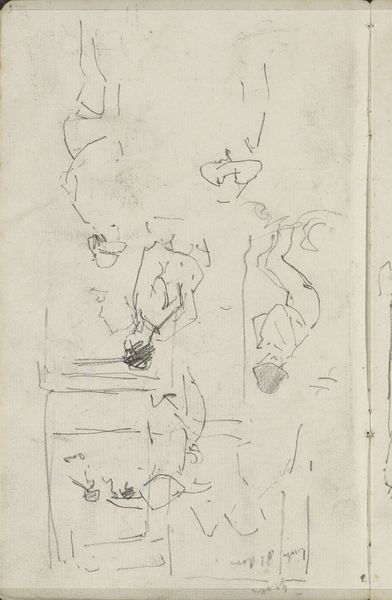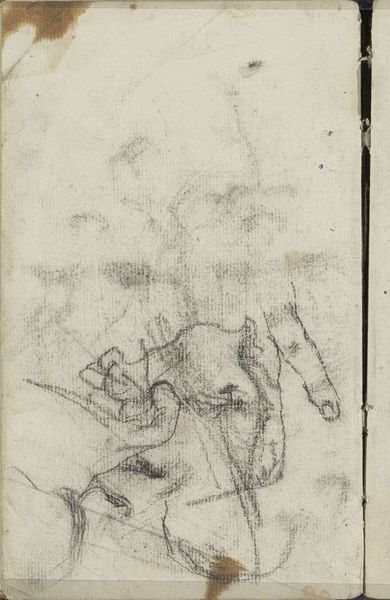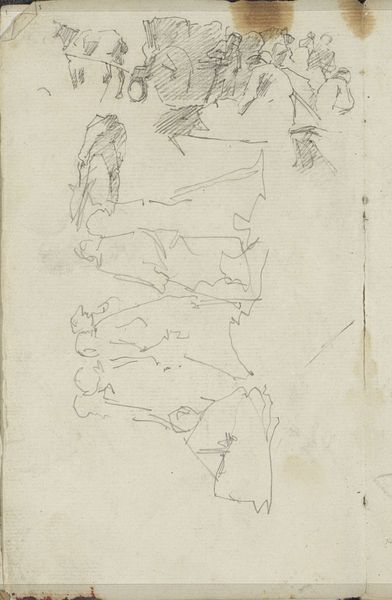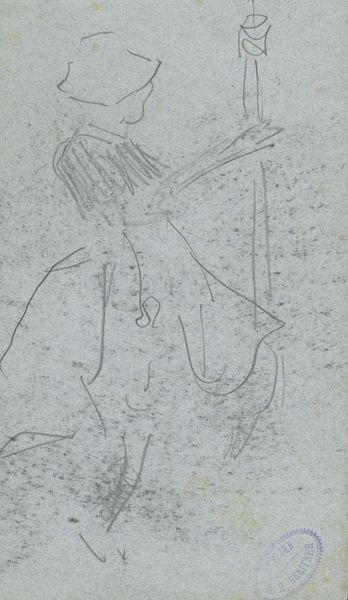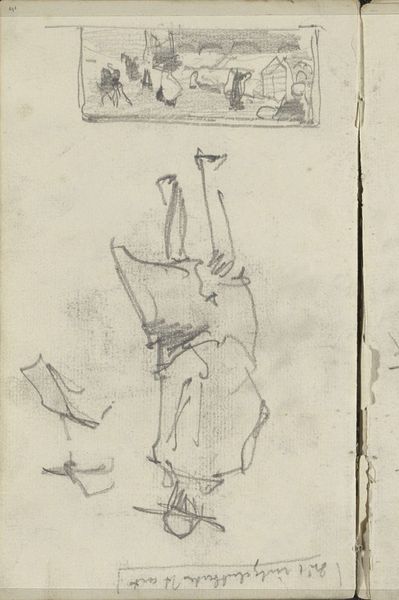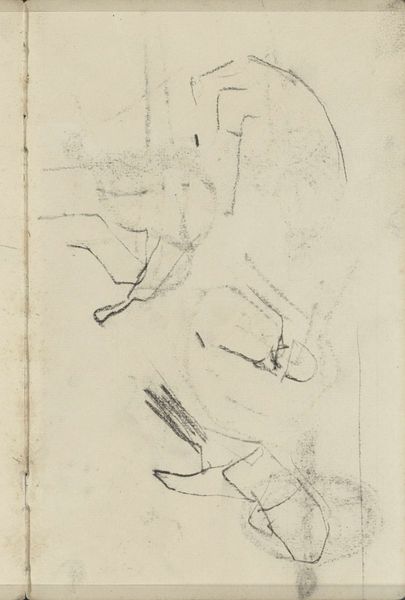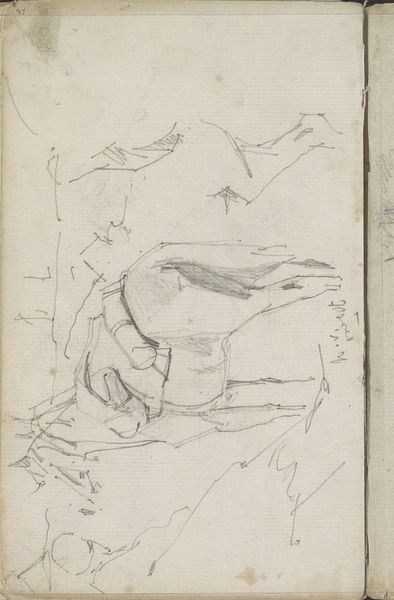
drawing, pencil
#
portrait
#
drawing
#
dutch-golden-age
#
impressionism
#
pencil
#
realism
Copyright: Rijks Museum: Open Domain
Curator: George Hendrik Breitner's "Wandelende vrouw," dating back to around 1882, presents a glimpse into his sketchbook. It’s currently held here at the Rijksmuseum. It's rendered in pencil on paper. Editor: Oh, the paper looks almost flimsy, doesn't it? Like a butterfly net trying to catch a thunderstorm. I feel like these aren't finished drawings, just fleeting impressions barely tethered to the page. Curator: Precisely. Breitner was a master of capturing movement and atmosphere. Notice the repetition of the figure; it's like watching her walk across the frame. It also indicates his commitment to realism over idealism, revealing his modern approach to Dutch art, focused on ordinary, working class subjects. Editor: She almost fades away; I find the effect to be terribly poignant. The rapid strokes feel very private, an intimacy, yet she could be anyone from the street. What statement was Breitner trying to convey by using this specific artistic technique? Curator: Well, think about the burgeoning urban environments of the late 19th century, the constant flux of people and commodities. Breitner sought to capture that energy, documenting the modern experience, yet simultaneously exploring what makes it difficult to pinpoint, freeze and capture an emotion or an atmosphere. It mirrored broader societal shifts too, as art institutions navigated the tensions between tradition and innovation. Editor: So, less about precise detail and more about... essence? Like a photographer using a shallow depth of field? Curator: Absolutely. It mirrors the contemporary movement toward fleeting moments, impressionism in other words, and a deep consideration of the modern pace of city life. His drawing is not about capturing this individual woman's identity but representing urban life in the city of Amsterdam more generally. Editor: Well, whatever it is, I find this "Wandelende vrouw" oddly affecting, its ephemeral beauty and rough simplicity speaking volumes about its subject. There's something very touching about catching someone at a transitonal phase; it speaks of both temporality, beauty, and movement all together. Curator: Yes, a compelling example of how historical shifts impact artists personally.
Comments
No comments
Be the first to comment and join the conversation on the ultimate creative platform.


